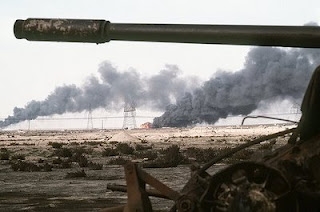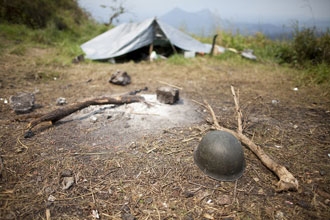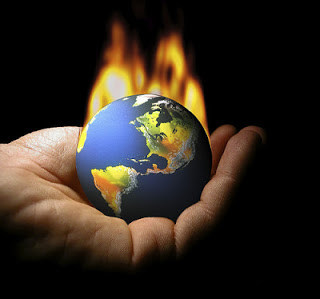International Day for Preventing the Exploitation 2024 is on Wednesday, November 6, 2024: meaning of Human Trafficking?
Wednesday, November 6, 2024 is International Day for Preventing the Exploitation 2024. Today: International Day for Preventing the Exploitation of the ... Observes International Day
As an Amazon Associate I earn from qualifying purchases.

Human trafficking is the illegal trade in human beings for the purposes of reproductive slavery, commercial sexual exploitation, forced labor, or a modern-day form of slavery.
The Protocol to Prevent, Suppress and Punish Trafficking in Persons, especially Women and Children (also referred to as the Trafficking Protocol) was adopted by the United Nations in Palermo, Italy in 2000, and is an international legal agreement attached to the United Nations Convention against Transnational Organized Crime. The Trafficking Protocol is one of three Protocols adopted to supplement the Convention.
The Protocol is the first global, legally binding instrument on trafficking in over half a century and the only one that sets out an agreed definition of trafficking in persons. The purpose of the Protocol is to facilitate convergence in national cooperation in investigating and prosecuting trafficking in persons. An additional objective of the Protocol is to protect and assist the victims of trafficking in persons with full respect for their human rights. The Trafficking Protocol defines human trafficking as:
(a) the recruitment, transportation, transfer, harbouring or receipt of persons, by means of the threat or use of force or other forms of coercion, of abduction, of fraud, of deception, of the abuse of power or of a position of vulnerability or of the giving or receiving of payments or benefits to achieve the consent of a person having control over another person, for the purpose of exploitation. Exploitation shall include, at a minimum, the exploitation of the prostitution of others or other forms of sexual exploitation, forced labour or services, slavery or practices similar to slavery, servitude or the removal of organs;
(b) The consent of a victim of trafficking in persons to the intended exploitation set forth in subparagraph (a) of this article shall be irrelevant where any of the means set forth in subparagraph (a) have been used;
(c) The recruitment, transportation, transfer, harbouring or receipt of a child for the purpose of exploitation shall be considered “trafficking in persons” even if this does not involve any of the means set forth in subparagraph (a) of this article;
(d) “Child” shall mean any person under eighteen years of age

Which human rights does sex trafficking violate?
Human trafficking is the illegal trade in human beings for the purposes of reproductive slavery, commercial sexual exploitation, forced labor, or a modern-day form of slavery. ~
The Protocol to Prevent, Suppress and Punish Trafficking in Persons, especially Women and Children (also referred to as the Trafficking Protocol) was adopted by the United Nations in Palermo, Italy in 2000, and is an international legal agreement attached to the United Nations Convention against Transnational Organized Crime. The Trafficking Protocol is one of three Protocols adopted to supplement the Convention.[2]
The Protocol is the first global, legally binding instrument on trafficking in over half a century and the only one that sets out an agreed definition of trafficking in persons. The purpose of the Protocol is to facilitate convergence in national cooperation in investigating and prosecuting trafficking in persons. An additional objective of the Protocol is to protect and assist the victims of trafficking in persons with full respect for their human rights. The Trafficking Protocol defines human trafficking as:
(a) [...] the recruitment, transportation, transfer, harbouring or receipt of persons, by means of the threat or use of force or other forms of coercion, of abduction, of fraud, of deception, of the abuse of power or of a position of vulnerability or of the giving or receiving of payments or benefits to achieve the consent of a person having control over another person, for the purpose of exploitation. Exploitation shall include, at a minimum, the exploitation of the prostitution of others or other forms of sexual exploitation, forced labour or services, slavery or practices similar to slavery, servitude or the removal of organs;
(b) The consent of a victim of trafficking in persons to the intended exploitation set forth in subparagraph (a) of this article shall be irrelevant where any of the means set forth in subparagraph (a) have been used;
(c) The recruitment, transportation, transfer, harbouring or receipt of a child for the purpose of exploitation shall be considered “trafficking in persons” even if this does not involve any of the means set forth in subparagraph (a) of this article;

What is "Sex Trafficking" ?
Human trafficking is the illegal trade of human beings for the purposes of reproductive slavery, commercial sexual exploitation, forced labor, or a modern-day form of slavery. The Protocol to Prevent, Suppress and Punish Trafficking in Persons, especially Women and Children (also referred to as the Trafficking Protocol) was adopted by the United Nations in Palermo, Italy in 2000, and is an international legal agreement attached to the United Nations Convention against Transnational Organized Crime. The Trafficking Protocol is one of three Protocols adopted to supplement the Convention.[1]
The Protocol is the first global, legally binding instrument on trafficking in over half a century and the only one that sets out an agreed definition of trafficking in persons. The purpose of the Protocol is to facilitate convergence in national cooperation in investigating and prosecuting trafficking in persons. An additional objective of the Protocol is to protect and assist the victims of trafficking in persons with full respect for their human rights. The Trafficking Protocol defines human trafficking as:
(a) [...] the recruitment, transportation, transfer, harbouring or receipt of persons, by means of the threat or use of force or other forms of coercion, of abduction, of fraud, of deception, of the abuse of power or of a position of vulnerability or of the giving or receiving of payments or benefits to achieve the consent of a person having control over another person, for the purpose of exploitation. Exploitation shall include, at a minimum, the exploitation of the prostitution of others or other forms of sexual exploitation, forced labour or services, slavery or practices similar to slavery, servitude or the removal of organs;
(b) The consent of a victim of trafficking in persons to the intended exploitation set forth in subparagraph (a) of this article shall be irrelevant where any of the means set forth in subparagraph (a) have been used;
(c) The recruitment, transportation, transfer, harbouring or receipt of a child for the purpose of exploitation shall be considered “trafficking in persons” even if this does not involve any of the means set forth in subparagraph (a) of this article;
(d) “Child” shall mean any person under eighteen years of age.[2]











